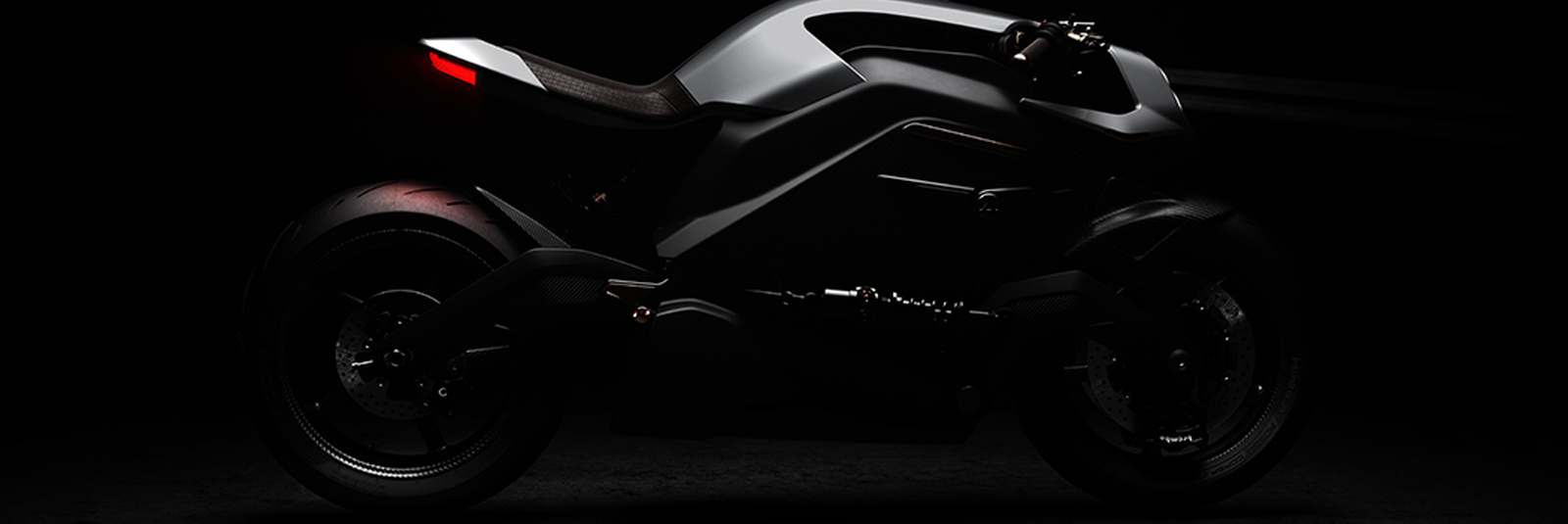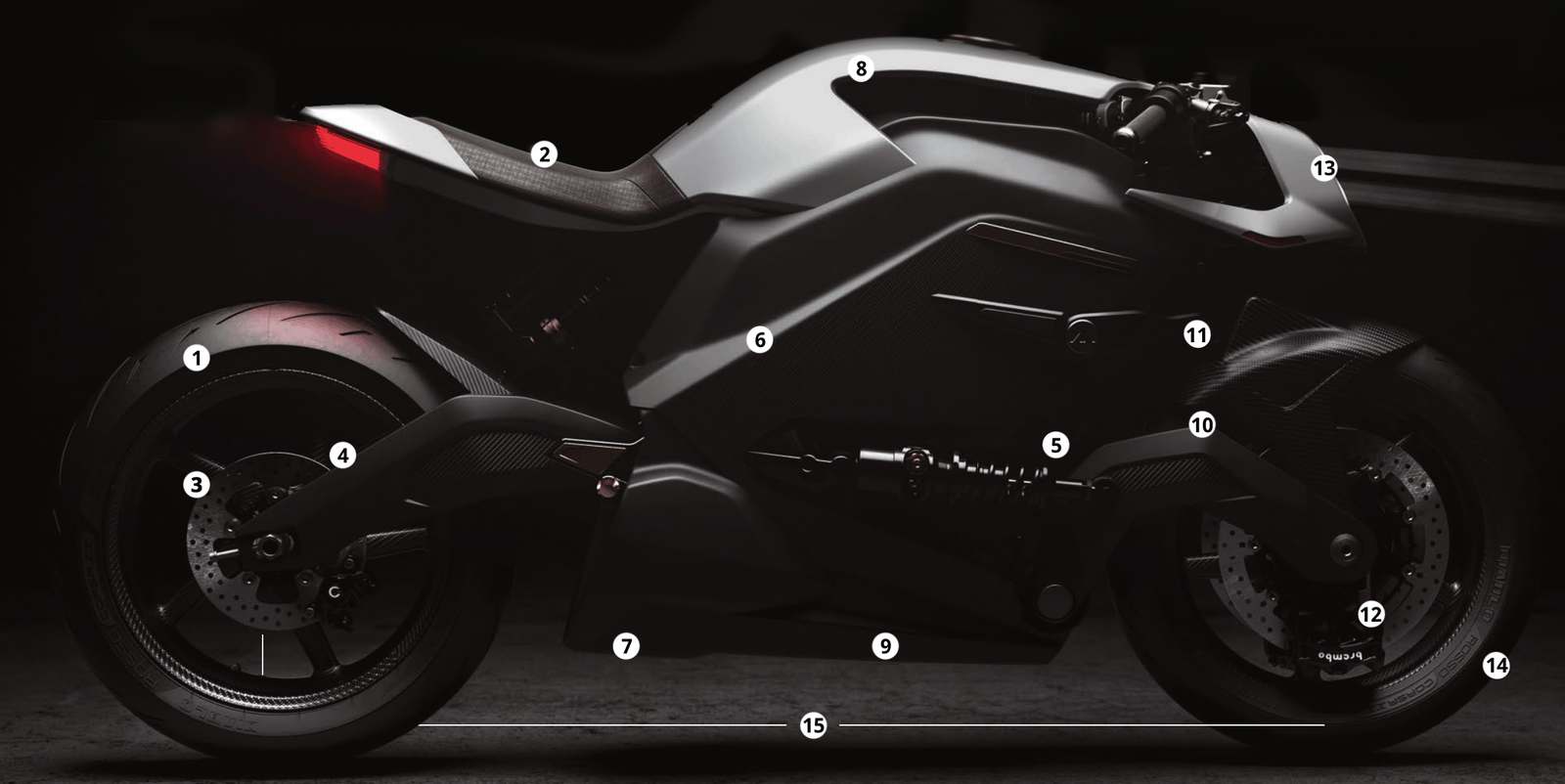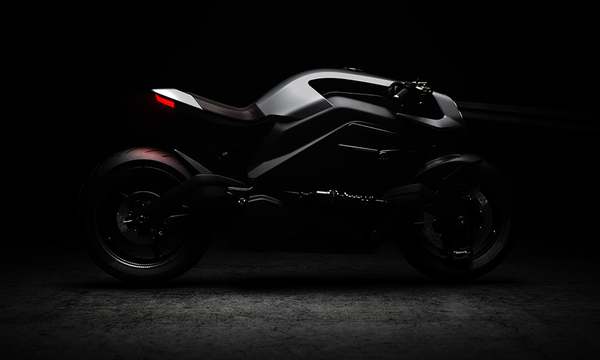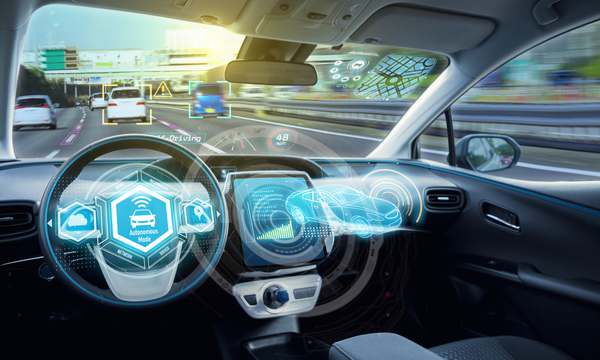
Arc Vector’s Motorbike is Electric
This article is from the CW Journal archive.
|
GET CW JOURNAL ARTICLES STRAIGHT TO YOUR INBOX |
The Arc Vector is the Tesla of motorbikes – and it costs Tesla-type money, too. At £90,000, it's a bike for taking out on special occasions. Not so much for A to B journeys but, as Arc's founder Mark Truman says, "A to C, a ride you take for pleasure". Vector will be the first product from the Coventry-based R&D team which has its roots in Jaguar Land Rover, a CW member.
There have been electric motorbikes before and even Harley Davidson has announced plans for one – but none are as technologically advanced as the Arc Vector. It even makes the helmet and jacket an integral part of the bike's systems. The helmet acts as the starting key, using a passive entry, passive start (PEPS) system, and the jacket uses a haptic system, with actuators down the spine and on the shoulders, connected to the bike by Wi-Fi.
Arc experimented with a number of technologies for the helmet's heads-up display (HUD) and settled on a waveguide imaging technology. It uses a small, air-cooled pico-projector to display an image that appears to be about five metres in front of the rider. The waveguide is a specially coated piece of glass. Light enters the glass and bounces back and forth between its front and back edges until it reaches another holographic optical element that extracts a small portion of light that leaves the glass with each bounce. The holographically printed diffractive patterns bend, shape, magnify and route the light, performing a range of optical functions in the thin waveguide that ordinarily would require complex and bulky refractive optics. Waveguide was chosen because it is not as intrusive or distracting as other systems that require the user to change their point of focus, such as near-to-eye screens or those based on prisms.
Arc is trying hard to minimise the amount of information shown and how it is displayed. For example, although the actual speed is shown, the image changes from white to red when the speed limit is exceeded, so the rider can register the colour change rather than having to monitor the actual numbers. The prototype helmet is powered internally by a Raspberry Pi computer but the production motorcycle will have all processing done inside the bike, with a video stream being sent to the helmet's projector using Wi-Fi.
There are a number of frequency options for the PEPS Keyless-Go system and Arc is still decideing which one to use. PEPS is designed to be operated some distance from a vehicle but Arc only wants it to be active within a metre of the Vector. This puts the company in the unusual position of working to deliberately reduce the effectiveness of its antenna, people working in radio usually put a huge amount of effort in trying to increase range. Arc sees the solution to this as being reduction in antenna number and the size. A car has at least four antennas and they are quite big, Arc is developing a smaller unit which will reduce the range. The work on this will determine the choice of frequency.
Bluetooth is used in the helmet for rider to rider communication. While there is very little engine noise from the electric bike, it doesn't have a windshield and this means a lot of wind noise so the helmet uses noise-cancelling to make communications easier.
The bike has basics instruments and Arc is also working on a system to allow the it to be ridden with a standard helmet. The solution will use a secure app in a phone which, when connected to the bike by USB can function as a key.

- Rear Wheel BST Black Diamond 5 carbon fibrewheel 180/55 ZR17 Pirelli Diablo Rosso Corsa II
- Seat height 840mm
- Brakes: Brembo Stylema 2-pistin caliper with single 240mm rear disc, Continental Advanced ABS with IMU
- Rear suspension carbon fibre swing arm, Ohlins TTX36 mono-shock, 110mm wheel travel
- Ohlins ILX36 mono-shock
- Monocoque carbon tub - the function is the form allowing best possible packaging of batteries
- 399 volt electric motor, giving 103kW (133bhp) and 292ftlb (396Nm) torque
- CCS2 charging, for a full charge in only 30 minutes
- Next generation Samsung li-on batteries tested to Reg100 standards, 16.8 kWh only 30 minutes
- Carbon fibre swing arm 110mm Wheel travel, Rake 18.5° Trail
- Hub-centre steering
- Brakes Brembo Stylema 4-piston monobloc calipers with 320mm floating front discs
- High intensity LED headlights
- Front wheel BST Black Diamond 5 carbon fibre wheel 120/70 ZR17 Pirelli Diablo Rosso Corsa II
- Wheelbase 1438mm
The user interface is more than just the helmet, the Arc Vector comes with a haptic jacket. The rider is expected to wear a thin layer of clothing, the haptic layer comes next, and a custom Vector leather jacket is worn over the top. The ultrasonic haptic actuators run down the rider's spine and there are others on each shoulder. Arc will look at other areas - the exciters work best on areas where you are ticklish – but the company is keen to reduce the amount of electronics which need to be disconnected when the garment is washed. Again, the connection technology is Wi-Fi.
The system works in three modes, Urban, Sports and Euphoric. In Urban mode the haptics are used mostly for safety, with potential collision warnings, notification of incoming phone calls, and a tap-on-the-shoulder signal which is tied into the satnav to indicate a turn is coming up.
In Sports mode, riders get more feedback which will help them to ride faster. An Inertial Measurement Unit analyses the g-forces and fills in the seat-of-the-pants information a bike without an internal combustion engine lacks. Without the vibration from the engine revs, gear changes or engine braking it's harder to judge braking points, limits of tyre adhesion, and how the bike is behaving. The combination of sensors and haptic feedback means a rider can sense the movement through the jacket.
Arc admits that it stumbled across the third mode, Euphoric. This plays music from the bike's onboard storage through headphones in the helmet driving the bass through the jacket. It chimes with the freedom a biker feels with an open road and good music.
Most haptics systems are motor based, such as the one in a mobile phone which has an eccentric weight that makes the phone vibrate – but that doesn't give nuances other than a change in frequency. Arc is using a technology devised by Dr Patrick Langdon at the University of Cambridge Engineering Design Centre. This uses high definition exciters like very small audio speakers that can turn a whole surface into a speaker. In the haptic jacket, they act as sub-woofers that use audio signals to give more variation in the range of sensations felt by the wearer.
The overall Android operating system is closed, with security being of the utmost importance. In time, Arc could develop its own apps store for validating and testing third-party software. This could also open up a route to other things Arc wants to incorporate, such as augmented reality. For example, as V2V data evolves, the HUD could show shadows to indicate that there is something beyond a blind bend or over the brow of a hump-backed bridge.
It's not just the technology that is very different to other bike systems, the construction is also unorthodox. Current electric motorbikes usually have a steel trellis frame chassis to which the electric drive system is attached and then covered with a faring. The Vector uses a carbon fibre monocoque structure, where loads are supported through an external skin, similar to an eggshell. The bike's shape is defined by packaging and aesthetics which lowers the centre of gravity and makes the cells part of the design. Arc has a special relationship with Samsung which gives it early access to new high-density lithium-ion cells. The result is a 220 kg bike which has 16.8 kWh battery.
|
GET CW JOURNAL ARTICLES STRAIGHT TO YOUR INBOX |

When someone looks at an electric car – or bike – and asks, "What'll it do, mister?", the question is inevitably about range. Using the official New European Driving Cycle (NEDC) metric, the distance comes out as 400 km (250 miles), but everyone knows that nobody drives or rides like that. Arc prefers the more realistic Artemis cycle which gives a figure of around 200 miles, equating to an easy Sunday ride – so you could easily do Hoxton to Cambridge and back. At full race pace around a circuit, which is the most punishing environment for the batteries, this reduces to 60 miles. There is no regeneration and all charging is off-board using CCS2 charging.
But, if you were really asking what it will do, the answer is 0 to 60 miles per hour in three seconds, with a top speed of 200kmph (125mph) limited by the single speed gearing.
Arc has an appetite for a faster motorsport version and the electric class at the Isle of Man TT races seem like an obvious target. When Elon Musk came to the UK to present the first cars to customers of the Tesla Model S, he talked about setting up a design centre in Coventry – when it comes to building exceptional electric vehicles, it seems that Coventry doesn't need Tesla's help.
|
Interested in the Automotive Special Interest Group? |
Simon Rockman bridges writing about technology and implementing it. As the editor of UK5G Innovation Briefing he visits many of the 5G applications. As Chief of Staff at Telet Research he works with a team installing 5G networks in not-spots. An experienced technology writer, he was the editor of Personal Computer World in the late 1980s and went on to found What Mobile magazine which he ran for ten years, and has reviewed over 300 handsets. As the mobile correspondent for The Register, he championed CW writing a number of articles supporting the organisation. He has also had senior roles in telecoms having been the Creative Experience Director at Motorola where he looked at new uses for mobile and Head of Requirements at Sony Ericsson where we worked on innovative devices at entry level. He was the Head of the Mobile Money Information Exchange at the GSMA and has launched Fuss Free Phones an MVNO aimed at older users











